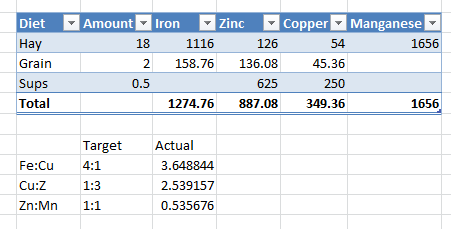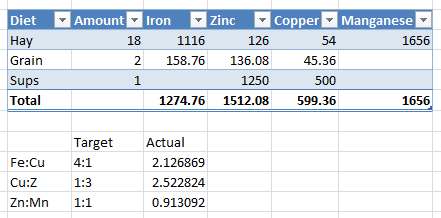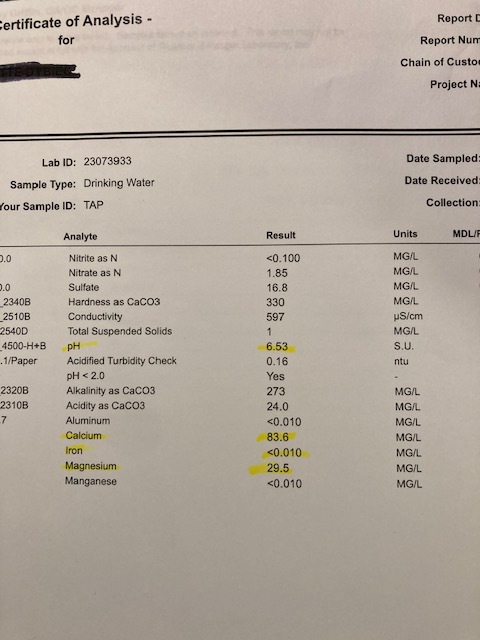Considering the cu/zn/fe/mn balance, the water looks good–you’re not getting more fe or mn to toss off your cu and zn. It’s certainly possible to have a ton in the water, and that can be a problem! For a little while I was sure our water here had a ton of mn, and that was why cu and zn were such a thing…but nope, test came back like yours.
I agree it’s pretty wild what getting enough cu and zn into the diet impacts. That’s great you’ve seen such improvement! When I was first facing stubborn and seasonal scratches (and cellulitis and abscessing, fun times) and was debating upping the cu & zn, I realized that a) risk is low and b) it was cheap. My two favorite things, ha!
I see results in a couple three weeks, usually sooner. I keep the dose up for maybe 6, then go back to baseline.
This is also a weird regional or location thing, ime. I had NONE of these issues before living in the north east.
I don’t know why certain horses just seem to need more, but have a couple swags that at least sound plausible: the microbiome is consuming some amount of the cu and zn, leaving less for the horse. Or the horse has some borderline damage to the gut, which is limiting absorption. Or there’s another mineral that’s high here that’s impacting this ratio, that hasn’t come to light yet. I dunno!




